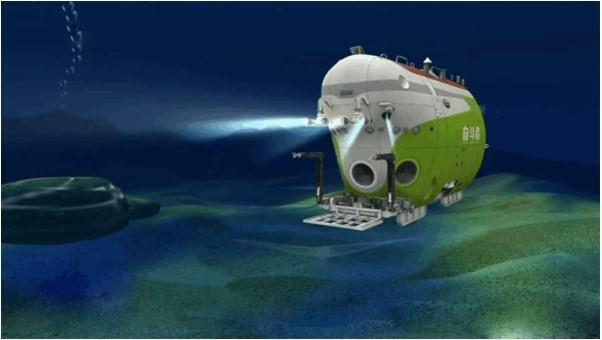
Chinese Submersible Discovers Deepest Marine Life at 10 km Depth
In a groundbreaking discovery, a Chinese submersible has found thriving ecosystems nearly 10 kilometers deep in the Mariana Trench, the deepest point in the ocean. The discovery, published in a recent study, has sent shockwaves through the scientific community, challenging our understanding of the limits of life on Earth.
The Mariana Trench is a vast and largely unexplored region of the Pacific Ocean, with depths reaching over 11,000 meters. Until now, it was believed that life at such extreme depths was impossible. However, the Chinese submersible, equipped with advanced sensors and cameras, has revealed a thriving community of organisms that have adapted to survive in the harsh conditions.
The ecosystems discovered by the Chinese submersible are based on chemosynthesis, a process in which microorganisms use chemical energy from methane and other compounds to produce food. This process allows the organisms to survive in the darkness, where sunlight cannot penetrate.
The submersible captured stunning footage of tubeworms, molluscs, and crustaceans thriving in the extreme conditions. These creatures are unlike any others found on Earth, with bodies adapted to the crushing pressure and near-freezing temperatures of the deep ocean.
The discovery raises significant concerns about the risks of deep-sea mining, as the Mariana Trench is a prime target for mineral extraction. The trench is believed to contain significant deposits of copper, zinc, and other valuable minerals. The Chinese government has been actively exploring the trench for mining opportunities, with plans to extract minerals in the coming years.
However, the discovery of thriving ecosystems in the trench has sparked concerns about the potential impact of mining on the delicate balance of the marine environment. The International Union for Conservation of Nature (IUCN) has warned that deep-sea mining could have devastating consequences for the ocean’s ecosystem, including the destruction of habitats and the extinction of species.
The Chinese government has yet to comment on the implications of the discovery for its mining plans. However, environmental groups are calling for a moratorium on deep-sea mining in the Mariana Trench until further research can be conducted on the impact of human activity on the ecosystem.
The discovery also raises questions about the limits of life on Earth. While we have long known that life can thrive in extreme conditions, such as hot springs and Antarctic ice sheets, the discovery of life at 10 kilometers depth challenges our understanding of the boundaries of life.
“This discovery is a game-changer for our understanding of the limits of life on Earth,” said Dr. Maria Rodriguez, a marine biologist at the University of California, San Diego. “It shows that life can thrive in conditions that were previously thought to be impossible for life to exist.”
The Chinese submersible that made the discovery is part of a program to explore the ocean’s deepest depths. The program, which is funded by the Chinese government, aims to map the ocean floor and discover new species.
The discovery of life at 10 kilometers depth is a reminder of the vast and largely unexplored regions of the ocean. As we continue to explore and understand the ocean’s depths, we may discover new species and ecosystems that challenge our understanding of the limits of life on Earth.
Source: https://www.breezyscroll.com/world/china/deepest-marine-life-mariana-trench-china-2025/






